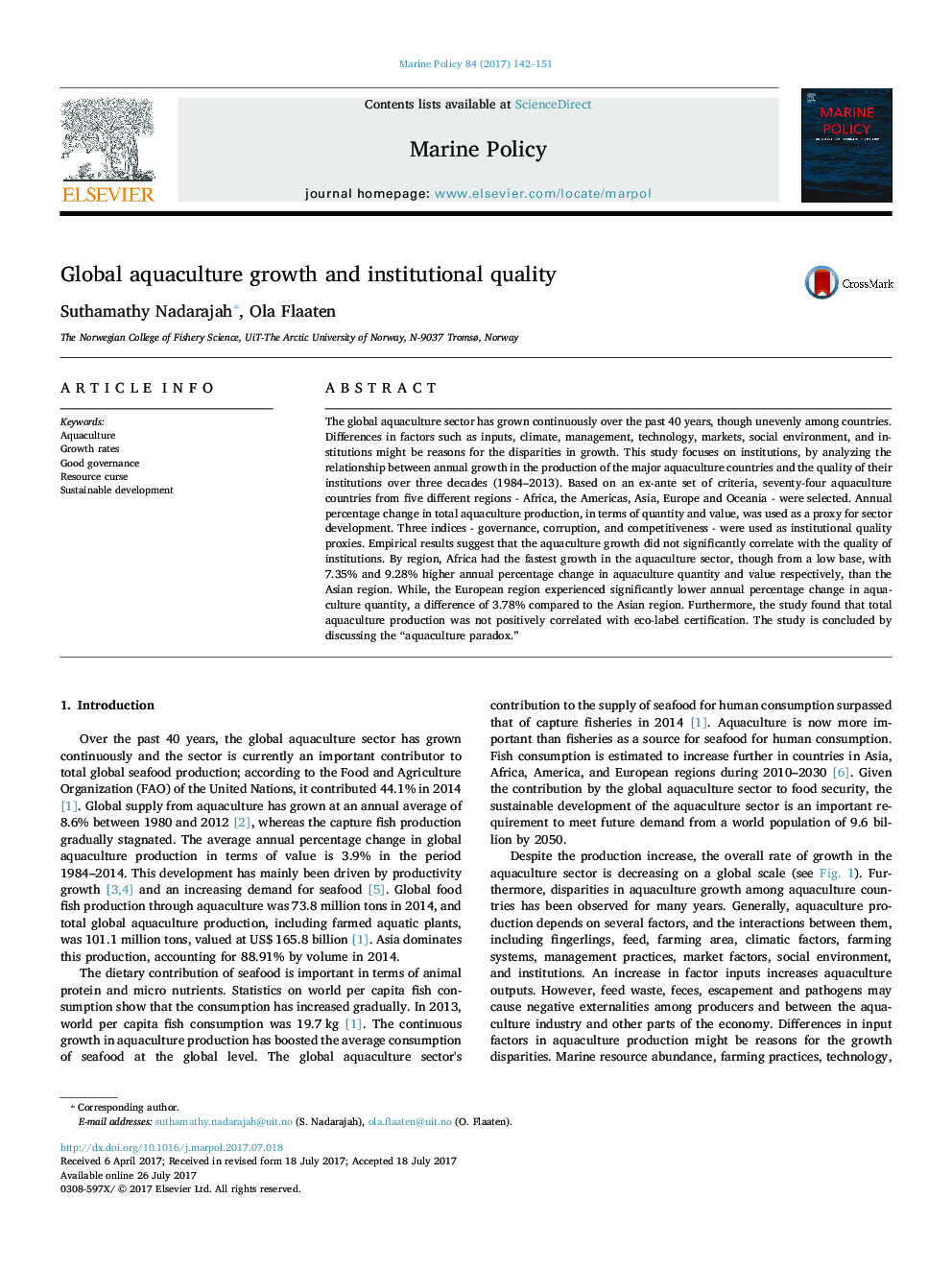| کد مقاله | کد نشریه | سال انتشار | مقاله انگلیسی | نسخه تمام متن |
|---|---|---|---|---|
| 5117979 | 1485495 | 2017 | 10 صفحه PDF | دانلود رایگان |
- The role of national institutions for aquaculture sector growth is analyzed.
- Aquaculture growth, on average, does not significantly correlate with institutional quality.
- The quality of institutions varies greatly among the aquaculture countries.
- By region, Africa had the highest aquaculture growth, though from a low base.
- The “aquaculture paradox” says that aquaculture differs from other industries.
The global aquaculture sector has grown continuously over the past 40 years, though unevenly among countries. Differences in factors such as inputs, climate, management, technology, markets, social environment, and institutions might be reasons for the disparities in growth. This study focuses on institutions, by analyzing the relationship between annual growth in the production of the major aquaculture countries and the quality of their institutions over three decades (1984-2013). Based on an ex-ante set of criteria, seventy-four aquaculture countries from five different regions - Africa, the Americas, Asia, Europe and Oceania - were selected. Annual percentage change in total aquaculture production, in terms of quantity and value, was used as a proxy for sector development. Three indices - governance, corruption, and competitiveness - were used as institutional quality proxies. Empirical results suggest that the aquaculture growth did not significantly correlate with the quality of institutions. By region, Africa had the fastest growth in the aquaculture sector, though from a low base, with 7.35% and 9.28% higher annual percentage change in aquaculture quantity and value respectively, than the Asian region. While, the European region experienced significantly lower annual percentage change in aquaculture quantity, a difference of 3.78% compared to the Asian region. Furthermore, the study found that total aquaculture production was not positively correlated with eco-label certification. The study is concluded by discussing the “aquaculture paradox.”
Journal: Marine Policy - Volume 84, October 2017, Pages 142-151
